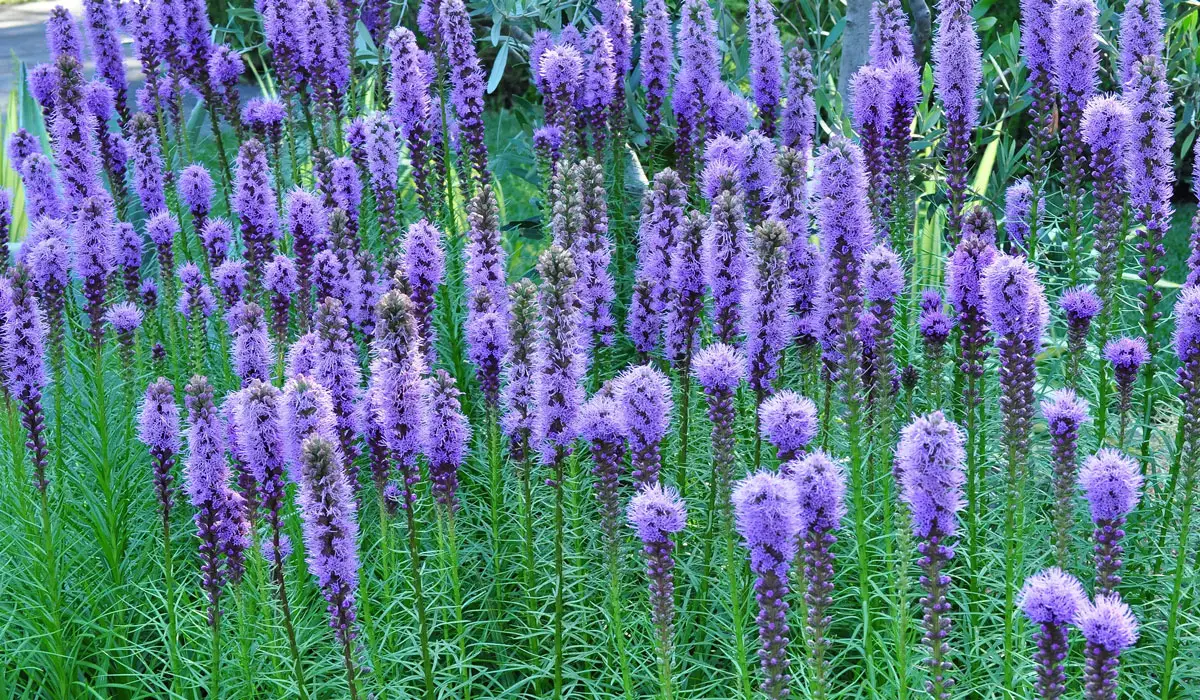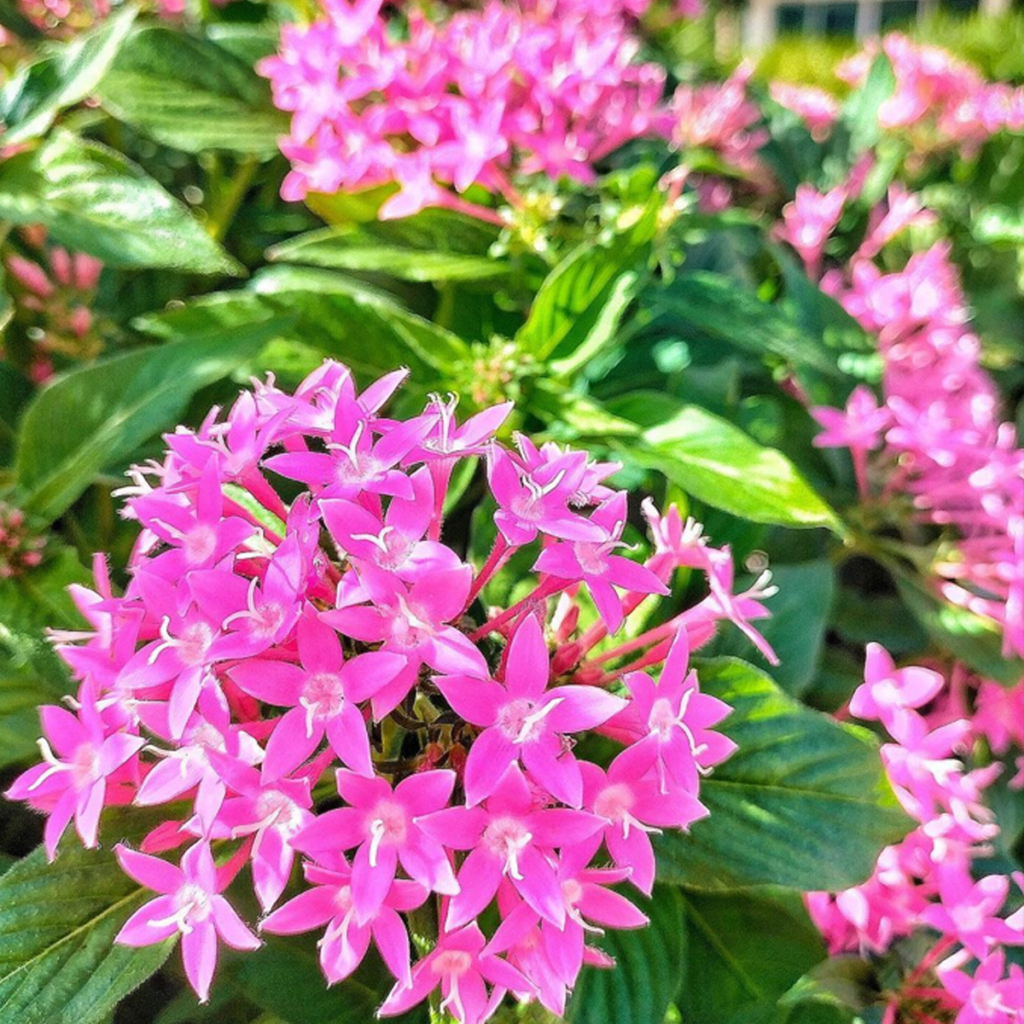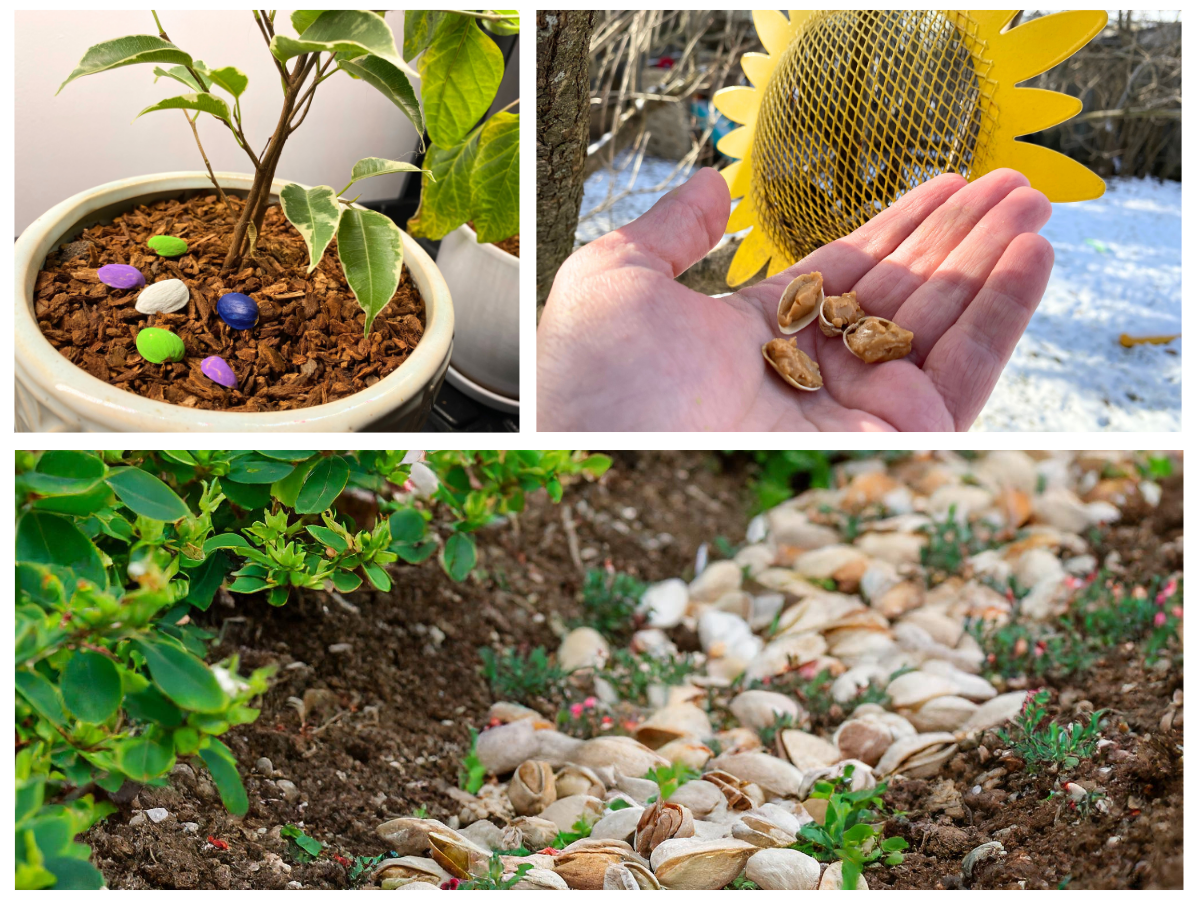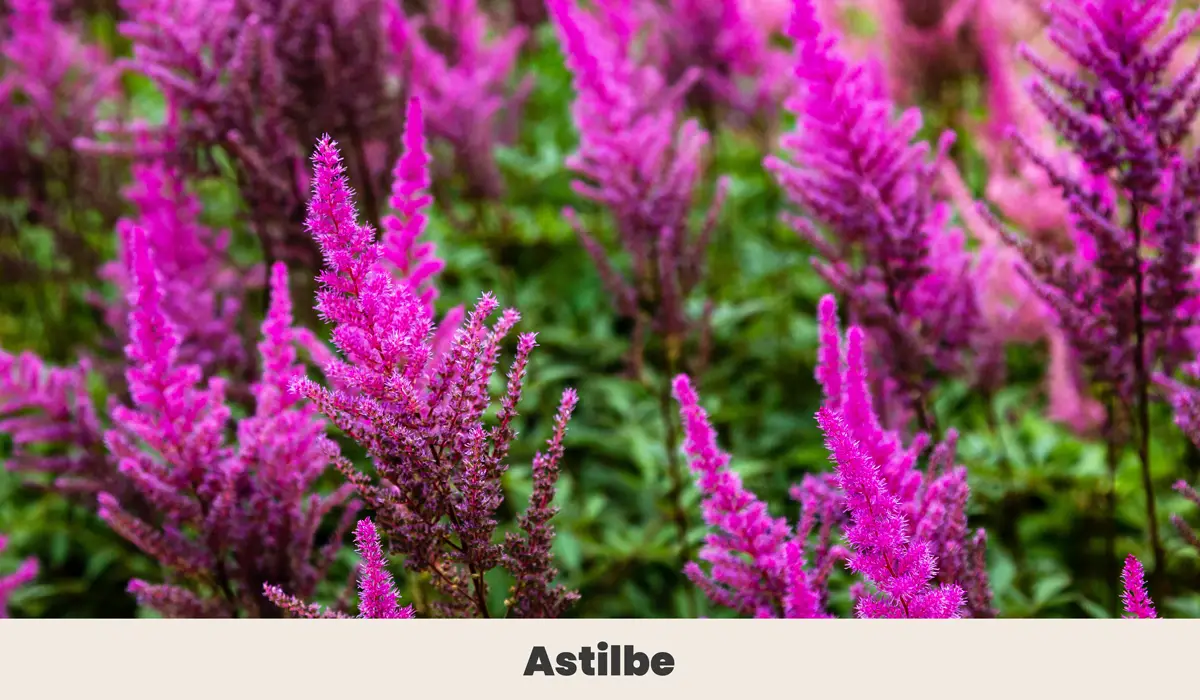12 Low Maintenance Perennial Flowers For Your Garden

Are you looking for beautiful and colorful flowers to add to your garden but don’t have a lot of time or energy for upkeep? If so, you’re in luck! Some grow low and slow wile others keep blooming all summer long.
There are plenty of low maintenance perennial flowers that can thrive in your garden with minimal care and attention. These hardy plants require little watering, pruning, or fertilizing, making them perfect for busy gardeners or those who are still working on getting their green thumb.

So,
let’s take a look at some of the most stunning low maintenance perennial flowers that will not only add beauty and color to your garden, but also save you time and effort.
whether you’re a beginner gardener or an experienced one, get ready to be inspired by these gorgeous and easy-to-care-for plants. ?
1. Sedum ‘Autumn Joy’ (Hylotelephium telephium)

Sedum ‘Autumn Joy’ is a hardy perennial that gardeners love for its low maintenance and stunning autumn blooms. This succulent-like plant features fleshy, grey-green leaves that form a compact, mounding habit. As fall approaches, the foliage turns a rich burgundy color, strikingly contrasting the pinkish-mauve flower heads that emerge in late summer.
Overall, Sedum’ Autumn Joy’ is a beautiful addition to any garden, providing a burst of color and requiring minimal care.
| Botanical Name: | Hylotelephium telephium |
| Growth Rate: | Fast |
| Native Range: | Asia and Europe |
| Hardiness Zones: | 3-9 |
| Dangers: | None |
| Soil Needs: | Well-drained |
| Tolerate: | Drought, heat and poor soil |
| Ease of Care | Easy |
| Diseases | Generally none |
| Propagation | Long |
| Fertilizer | Not required |
| Pests | Generally none |
| Blooming Period | Long |
| Pruning | Cut back in spring to encourage bushier growth |
| Water needs: | Low to moderate |
2. Butterfly Bush (Buddleja)

The Butterfly Bush, also known as Buddleja, is a popular perennial shrub that is highly sought after by gardeners for its ability to attract butterflies and other pollinators. This easy-to-grow plant features long, slender spikes of fragrant flowers in shades of pink, purple, white, and red, which bloom in mid-summer and last well into autumn.
In addition to its beauty and pollinator-friendly nature, Butterfly Bush is also prized for its versatility, as it can be trained into a small tree or left to grow as a bush. Whether you have a large garden or a small balcony, this plant will bring color and life to your outdoor space.
| Botanical Name: | Buddleja |
| Growth Rate: | Fast |
| Native Range: | Asia, Africa, and the Americas |
| Hardiness Zones: | 5-9 |
| Dangers: | None |
| Soil Needs: | Well-drained |
| Tolerate: | Drought, heat, pollution |
| Ease of Care | Easy |
| Diseases | None serious |
| Propagation | Cuttings |
| Fertilizer | Minimal |
| Pests | None serious |
| Blooming Period | Long |
| Pruning | Regular |
| Water needs: | Moderate |
3. Blanket Flower (Gaillardia)

The Blanket Flower, or Gaillardia, is a hardy low growing perennial that adds color to any garden. This plant features large, daisy-like flowers with bright yellow or orange-red petals and a red-brown center. The blooms last from early summer until fall, making them a long-lasting addition to your garden.
In addition to its drought tolerance and pollinator-friendly nature, Blanket Flower is also low-maintenance and can grow in various soil types. Whether you have a rock garden or a meadow, this plant will add color and life to your outdoor space.
| Botanical Name: | Gaillardia |
| Growth Rate: | Moderate |
| Native Range: | North and South America |
| Hardiness Zones: | 3-10 |
| Dangers: | None |
| Soil Needs: | Well-drained, sandy soil |
| Tolerate: | Drought, heat, poor soil |
| Ease of Care | Easy |
| Diseases | Powdery mildew, rust |
| Propagation | Seed, division |
| Fertilizer | Balanced fertilizer |
| Pests | Aphids, thrips |
| Blooming Period | Long |
| Pruning | Deadheading can encourage more blooms |
| Water needs: | Regular |
4. Garden Phlox (Phlox paniculata)

Garden Phlox, or Phlox paniculata, is on my list as one of the top perennial flowers that bloom all summer. prized for its fragrant and colorful blooms. This plant features dense clusters of flowers in shades of pink, purple, white, and red that color in mid-summer and last for several weeks. The flowers are beautiful to pollinators, such as bees and butterflies, making them a great addition to any pollinator garden.
In addition to its beauty and pollinator-friendly nature, Garden Phlox is also highly resistant to deer and rabbit damage, making it an excellent choice for gardens in areas with high wildlife activity.
| Botanical Name: | Phlox paniculata |
| Growth Rate: | Moderate to fast |
| Blooming period | Long |
| Hardiness Zones: | 3-8 |
| Light | Full to partial sun |
| Soil Needs: | Well-draining, fertile soil |
| Tolerate: | Partial shade |
| Ease of Care | Easy |
| Diseases | Powdery mildew |
| Propagation | Division, cuttings, seeds |
| Fertilizer | Balanced fertilizer in early spring |
| Pests | Spider mites, thrips |
| Humidity | High |
| Pruning | Cut back after blooming to promote a second flush of blooms |
| Water needs: | Consistent moisture required |
5. New England Aster (Symphyotrichum novae-angliae)

The New England Aster, also known as Symphyotrichum novae-angliae, is a stunning native perennial flower that blooms in late summer and early fall. This plant features large clusters of purple, pink, or white flowers that are beautiful to pollinators such as bees, butterflies, and hummingbirds.
In addition to its beauty and pollinator-friendly nature, New England Aster is also highly resistant to pests and diseases, making it a low-maintenance addition to your garden.
| Botanical Name: | Symphyotrichum novae-angliae |
| Growth Rate: | Moderate to Fast |
| Native Range: | North America |
| Hardiness Zones: | 3 to 8 |
| Dangers: | None significant |
| Soil Needs: | Well-draining, fertile soil |
| Tolerate: | Drought, heat, humidity, deer |
| Ease of Care | Easy |
| Diseases | Powdery mildew, rust, aster yellows |
| Propagation | Division or seed |
| Fertilizer | Light, balanced fertilizer in early spring |
| Pests | Aphids, spider mites |
| Blooming Period | Long |
| Pruning | Cut back in spring before new growth emerges |
| Water needs: | Moderate |
6. Yarrow (Achillea millefolium)

Yarrow, or Achillea millefolium, is a hardy perennial flower known for its delicate and feathery foliage and clusters of tiny flowers in shades of yellow, white, pink, or red. This plant is highly attractive to pollinators such as bees and butterflies, making it a great addition to any pollinator garden.
In addition to its pollinator-friendly nature and versatility, Yarrow is also prized for its medicinal properties, with traditional uses including treating wounds, reducing fever, and easing digestive issues.
| Botanical Name: | Achillea millefolium |
| Growth Rate: | Fast |
| Native Range: | Northern hemisphere |
| Hardiness Zones: | 3 to 9 |
| Dangers: | None |
| Soil Needs: | Well-draining, poor soil |
| Tolerate: | Drought, heat, deer |
| Ease of Care | Easy |
| Diseases | Powdery mildew |
| Propagation | Division or seed |
| Fertilizer | Not necessary |
| Pests | Aphids, spider mites |
| Blooming Period | Long |
| Pruning | Cut back after blooming to promote rebloom |
| Water needs: | Low |
7. Blazing Star (Liatris)

Blazing Star, or Liatris, is a striking native perennial flower known for its tall spikes of purple, pink, or white flowers that bloom in late summer and early fall. This plant is highly attractive to pollinators such as bees and butterflies, making it a valuable addition to any pollinator garden.
In addition to its beauty and pollinator-friendly nature, Blazing Star is also highly adaptable to various soil types and light conditions, making it an excellent choice for a wide range of garden settings, from borders and meadows to rock gardens and containers.
| Botanical Name: | Liatris |
| Growth Rate: | Moderate |
| Native Range: | North America |
| Hardiness Zones: | 3-9 |
| Dangers: | None significant |
| Soil Needs: | Well-draining, average to dry soil |
| Tolerate: | Drought, heat, deer |
| Ease of Care | Easy |
| Diseases | None significant |
| Propagation | Division or seed |
| Fertilizer | Light, balanced fertilizer in early spring |
| Pests | Aphids, spider mites |
| Blooming Period | Long |
| Pruning | Cut back in late fall or early spring |
| Water needs: | Low to moderate |
8. Primrose (Primula vulgaris)

Primrose, or Primula vulgaris, is a charming early-spring blooming perennial flower native to Europe and Asia. This plant is often confused as a weed and features clusters of delicate flowers in shades of pink, purple, white, and yellow and is highly attractive to early-season pollinators such as bees and butterflies.
In addition to its early-season beauty and pollinator-friendly nature, Primrose has been used for centuries in traditional herbal medicine for various ailments, including coughs, colds, and headaches.
| Botanical Name: | Primula vulgaris |
| Growth Rate: | Slow |
| Native Range: | Europe, Asia |
| Hardiness Zones: | 3-8 |
| Dangers: | Toxic to pets |
| Soil Needs: | Moist, well-drained |
| Tolerate: | Partial shade |
| Ease of Care | Easy |
| Diseases | Fungal |
| Propagation | Seed, division, cuttings |
| Fertilizer | Balanced |
| Pests | Aphids and spider mites |
| Blooming Period | Long |
| Pruning | Not required |
| Water needs: | Regular |
9. False Goat’s Beard (Astilbes)

False Goat’s Beard, or Astilbes, are graceful and elegant perennial flowers known for their feathery plumes of flowers in shades of pink, red, white, and purple. This plant is highly attractive to pollinators such as bees and butterflies, making it a great addition to any pollinator garden.
In addition to its beauty and pollinator-friendly nature, False Goat’s Beard is also deer-resistant, making it an excellent choice for gardens in areas where deer are common.
| Botanical Name: | Astilbe |
| Growth Rate: | Fast |
| Native Range: | Asia, North America |
| Hardiness Zones: | 3-9 |
| Dangers: | None |
| Soil Needs: | Moist, well-drained, acidic |
| Tolerate: | Shade, wet soil |
| Ease of Care | Easy |
| Diseases | Powdery mildew, crown rot |
| Propagation | Division, seed |
| Fertilizer | Low nitrogen |
| Pests | Slugs, snails |
| Blooming Period | Long |
| Pruning | Remove spent flowers |
| Water needs: | Consistent moisture needed |
10. Lungwort (Pulmonaria)

Lungwort, or Pulmonaria, is a unique and attractive perennial flower known for its striking foliage and delicate flowers. The leaves of this plant are green with white or silver spots, creating a lovely contrast in shady garden areas. The flowers are typically pink, purple, or blue and are highly attractive to early-season pollinators such as bees and butterflies.
In addition to its beauty and pollinator-friendly nature, Lungwort has been used for centuries in traditional herbal medicine to treat respiratory ailments, thanks to its purported lung-cleansing properties.
| Botanical Name: | Pulmonaria |
| Growth Rate: | Medium |
| Native Range: | Europe, Western Asia |
| Hardiness Zones: | 4-8 |
| Dangers: | None |
| Soil Needs: | Moist, well-drained |
| Tolerate: | Shade, poor soil |
| Ease of Care | Easy |
| Diseases | Powdery mildew, leaf spot |
| Propagation | Division, seed |
| Fertilizer | Not required |
| Pests | Slugs, snails |
| Blooming Period | Long |
| Pruning | Remove spent flowers and foliage |
| Water needs: | Average to moist |
11. Catmint (Nepeta)

Catmint, or Nepeta, is a hardy and attractive perennial flower known for its striking blue-purple flowers and fragrant foliage. This plant is an excellent choice for gardeners looking to attract pollinators such as bees and butterflies, as it is desirable to these essential insects.
According to horticultural expert David Salman, “Catmint is a great choice for garden areas that receive full sun and have well-draining soil. It is drought-tolerant and low-maintenance, making it a great choice for busy gardeners.”
In addition to its beauty and pollinator-friendly nature, Catmint is also known for its purported medicinal properties, which include treating anxiety and insomnia. The essential oil extracted from the plant is calming and can be used in aromatherapy.
| Botanical Name: | Nepeta |
| Growth Rate: | Fast |
| Native Range: | Europe, Asia, Africa |
| Hardiness Zones: | 3-8 |
| Dangers: | None |
| Soil Needs: | Well-drained |
| Tolerate: | Drought, poor soil |
| Ease of Care | Easy |
| Diseases | None significant |
| Propagation | Division, seed |
| Fertilizer | Not required |
| Pests | None significant |
| Blooming Period | Long |
| Pruning | Cut back after flowering |
| Water needs: | Average |
12. Purple Coneflowers (Echinacea purpurea)

Purple Coneflowers, or Echinacea purpurea, is a popular perennial flower known for its striking pink-purple petals and spiky central cones. In addition to their beauty, these flowers are also highly valued for their medicinal properties, which include boosting the immune system and reducing inflammation.
In addition to their medicinal and ornamental benefits, Purple Coneflowers are also highly attractive to pollinators such as bees and butterflies. If you’re looking for a low-growing option they are also available in dwarf varieties.
| Botanical Name: | Echinacea purpurea |
| Growth Rate: | Medium |
| Native Range: | Central and Eastern North America |
| Hardiness Zones: | 3-9 |
| Dangers: | None |
| Soil Needs: | Well-drained |
| Tolerate: | Drought, heat |
| Ease of Care | Easy |
| Diseases | Powdery mildew, aster yellows |
| Propagation | Division, seed |
| Fertilizer | Low nitrogen |
| Pests | Japanese beetles |
| Blooming Period | Long |
| Pruning | Deadhead after flowering |
| Water needs: | Average |




